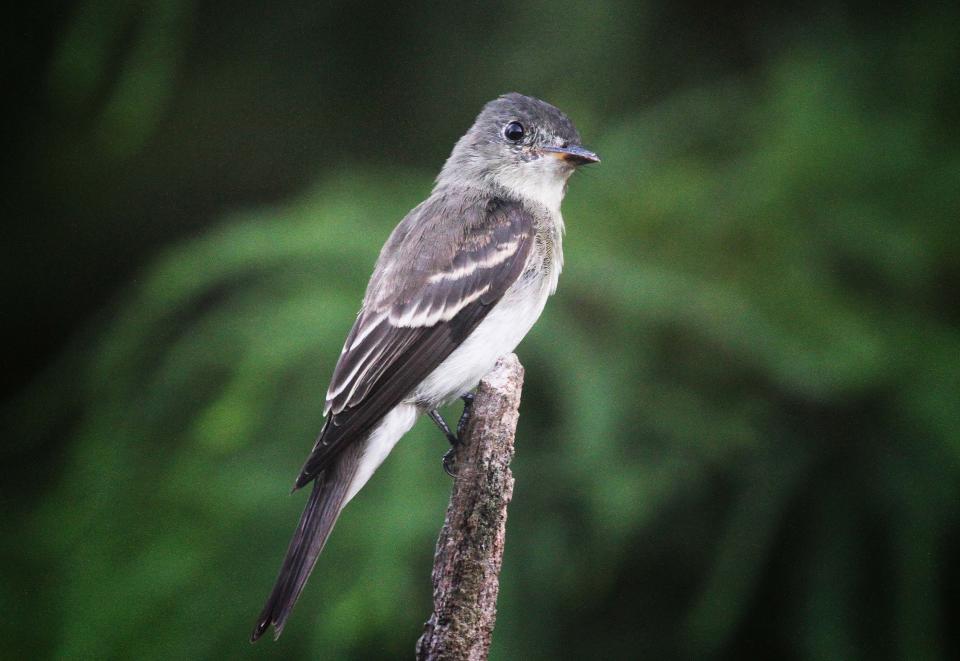Here's how to ID that bird in your yard in 4 steps
When an unknown bird shows up in the yard, having a clear, four-step plan for identification will better ensure success.
Folks new to birding may get a quick glimpse of something different, grab a field guide, and start flipping pages. Confusion sets in as multiple pages of images begin blurring. Finally, recollection of the glimpse itself blurs into oblivion. The bird goes unidentified. Bummer. Could have been something really exciting.
There is a remedy to such frustration. Instead of the look-grab-and-flip approach, stop, take a breath, and follow a disciplined approach.
Local news: Wesselman Woods 90 acres larger after new land purchase, city agreement
First, watch the bird as long as it lets you. Start by carefully looking at its head, particularly bill size and shape. That helps put the bird in a family. Tiny, pointed beak? Rounded tip? Chisel like? Stout? Hooked? Flat and wide?
As you continue watching, look for plumage patterns. Wing bars? Head stripes? Chest streaks? Given time, note the tail. Length? Square-tipped, rounded, pointed, or forked?

Okay, we've not yet mentioned color. Sure, overall color is helpful as are any colorful patterns. But don't make color the primary interest. To recall, for instance, that a bird had yellow on it narrows identification choices to just over 80 local species. Not very helpful.
Second, once the bird departs, jot down everything you noted. If possible, make a few sketches − not pieces of art but illustrative "notes" about all the features you could take in during whatever time you had to watch. By making such notes, checking multiple field guide illustrations will not blur the details that you zeroed in on during your first-hand observation.
Third, given the bill's structure, try to put the bird in a family. Was the bill conical, like the cardinal family? Big and pointed like the blackbird family? Tiny and slender like the warbler family? Broad and triangular like the flycatcher family? Check those families first.
Local life: Vanderburgh Co. to vote on helping pay for Wesselman Park pickleball courts
Now, finally, fourth, it's time to grab and flip − but you'll no longer need to flip through anything more than the family to which you've narrowed your search. Begin preferably with your paper field guide rather than a phone app. Paper guides will offer the best comparisons.
Get a good one; spend the money. If possible, check several different guides. Each has its own strength and all present birds in a slightly different way in different positions with slightly different coloration.
Paper guides, however, are best for using at home. Phone apps reign in the field for their convenience. Again, however, not all apps are created equal. Free ones never measure up to the good ones. Sibley's app (as well as the paper version) is the gold standard.
No matter which guide you choose, consider the fact that light messes with color. Thus, what you saw − depending on whether the bird was in shade, dappled light, or bright sun − may not be exactly the color illustrated in any given guide. Another good reason to compare multiple guides.
As you narrow your identification search to the final possibilities, always, always check range maps. They show where a bird lives and when it lives there. Checking maps will prevent misidentifying an immature red-winged blackbird as a tri-colored blackbird − unless you actually live in California where it's found.
For more information about birds and bird habitat, see Sharon Sorenson's books How Birds Behave, Birds in the Yard Month by Month, and Planting Native to Attract Birds to Your Yard. Follow daily bird activity on Facebook at SharonSorensonBirdLady, or email her at chshsoren@gmail.com.
This article originally appeared on Evansville Courier & Press: Which bird ID app works the best?

